Tran Thuong
On a December day in Hanoi, French Ambassador to Vietnam Olivier Brochet and his team embarked on an engaging journey, exploring sites that symbolize the long-standing and fruitful cooperation between Vietnam and France.
At the foot of Long Bien Bridge in Phuc Tan Ward, local residents were surprised to see international guests visiting a community playground. Previously a dumping ground, the area was transformed into a park with forested landscapes, partly funded by a cultural development fund co-established by the French and German embassies.
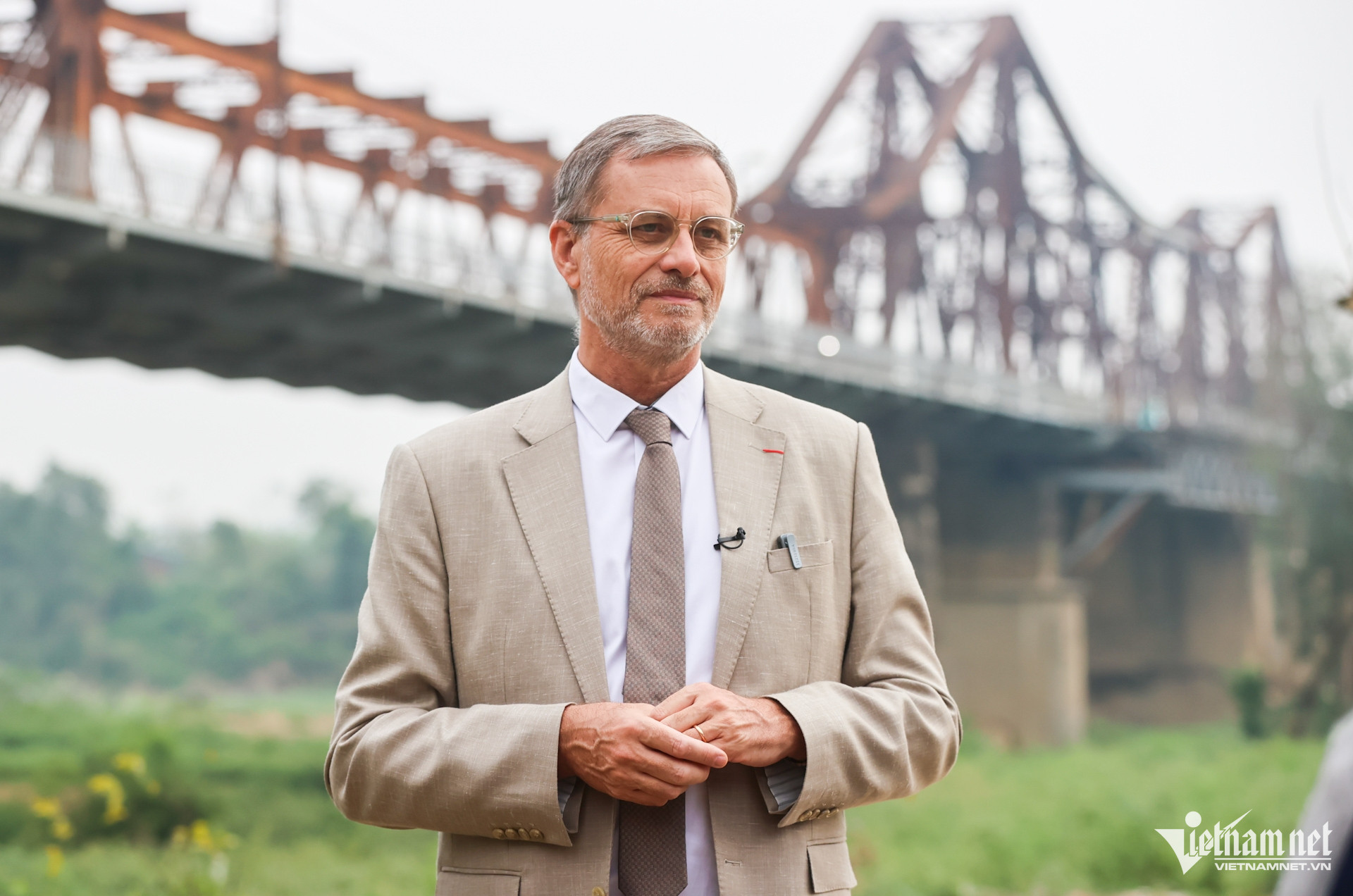
“It’s wonderful to see a project serving the community right under the historic Long Bien Bridge,” said Ambassador Brochet. He discovered the park only weeks earlier and was struck by its unique location, near the iconic bridge and the Red River.
During his visit, members of the Phuc Tan Women’s Union warmly introduced the Ambassador to the park, its herbal plants, and flowers. “I was particularly impressed by the medicinal plants here,” he shared.
The Ambassador noted that the park offers an inspiring example for future collaborations between France and Hanoi in riverbank urban planning, an area where France has extensive experience, as seen in previous projects around Hoan Kiem Lake.
 |
 |
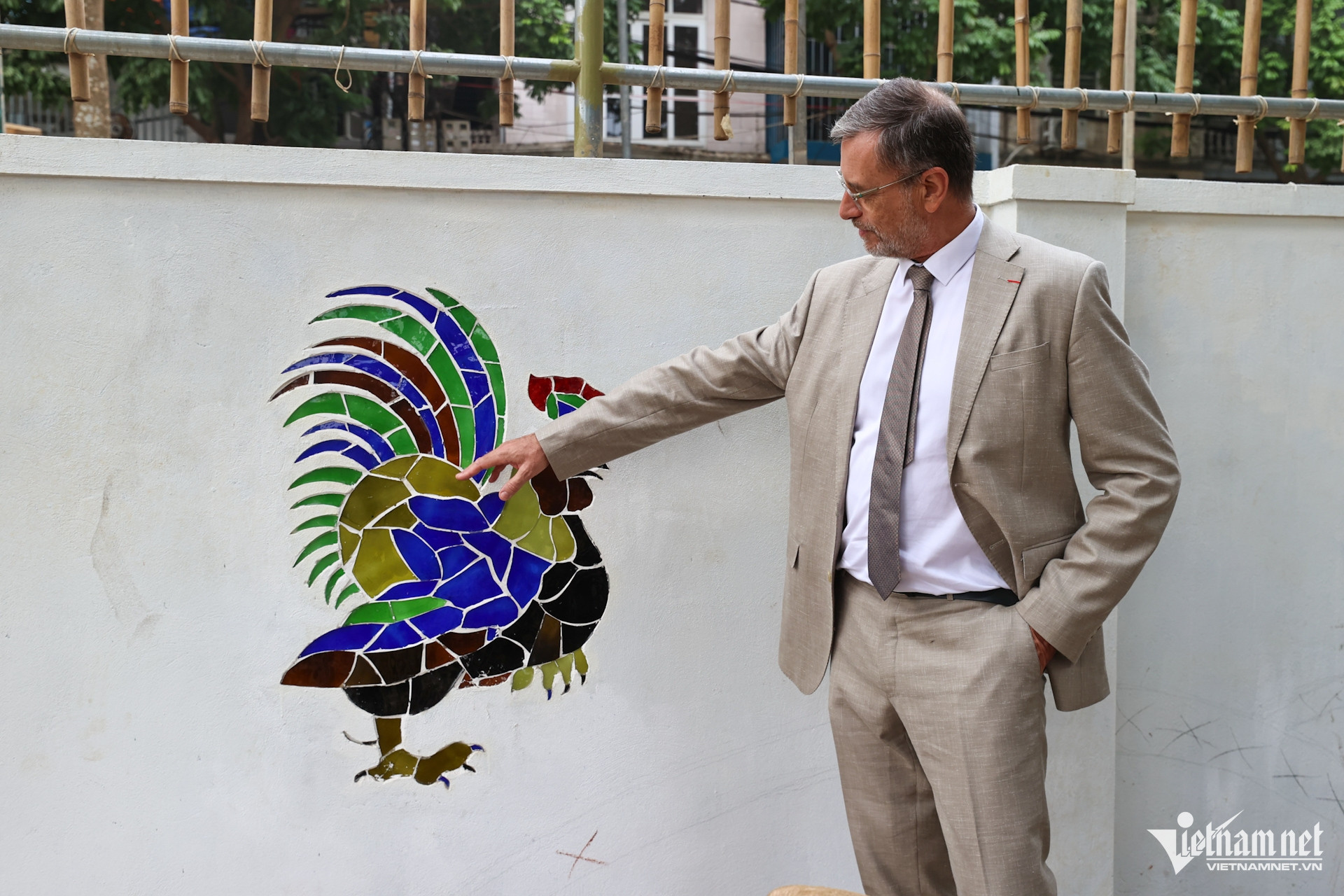 |
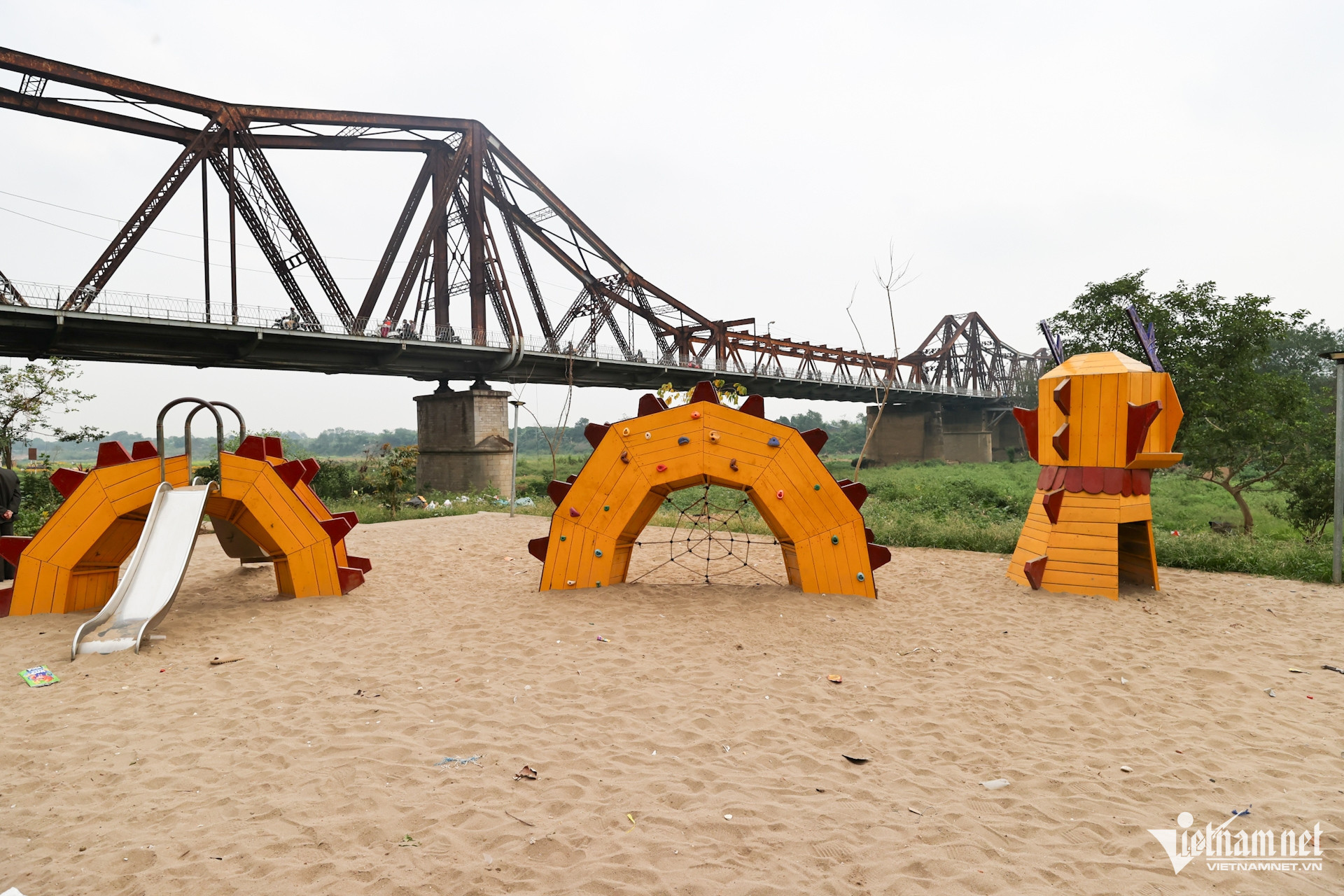 |
Reflecting on the historical significance of Long Bien Bridge, Ambassador Brochet described it as an enduring symbol of Hanoi and a testament to Vietnam-France relations. Built in 1902, the bridge was the fourth longest in the world at the time.
“The ties between our two nations surrounding this bridge continue. France is currently sponsoring a study on potential restoration methods for Long Bien Bridge. We expect the findings to be released by 2025, laying the groundwork for its preservation and sustainable development,” the Ambassador stated.
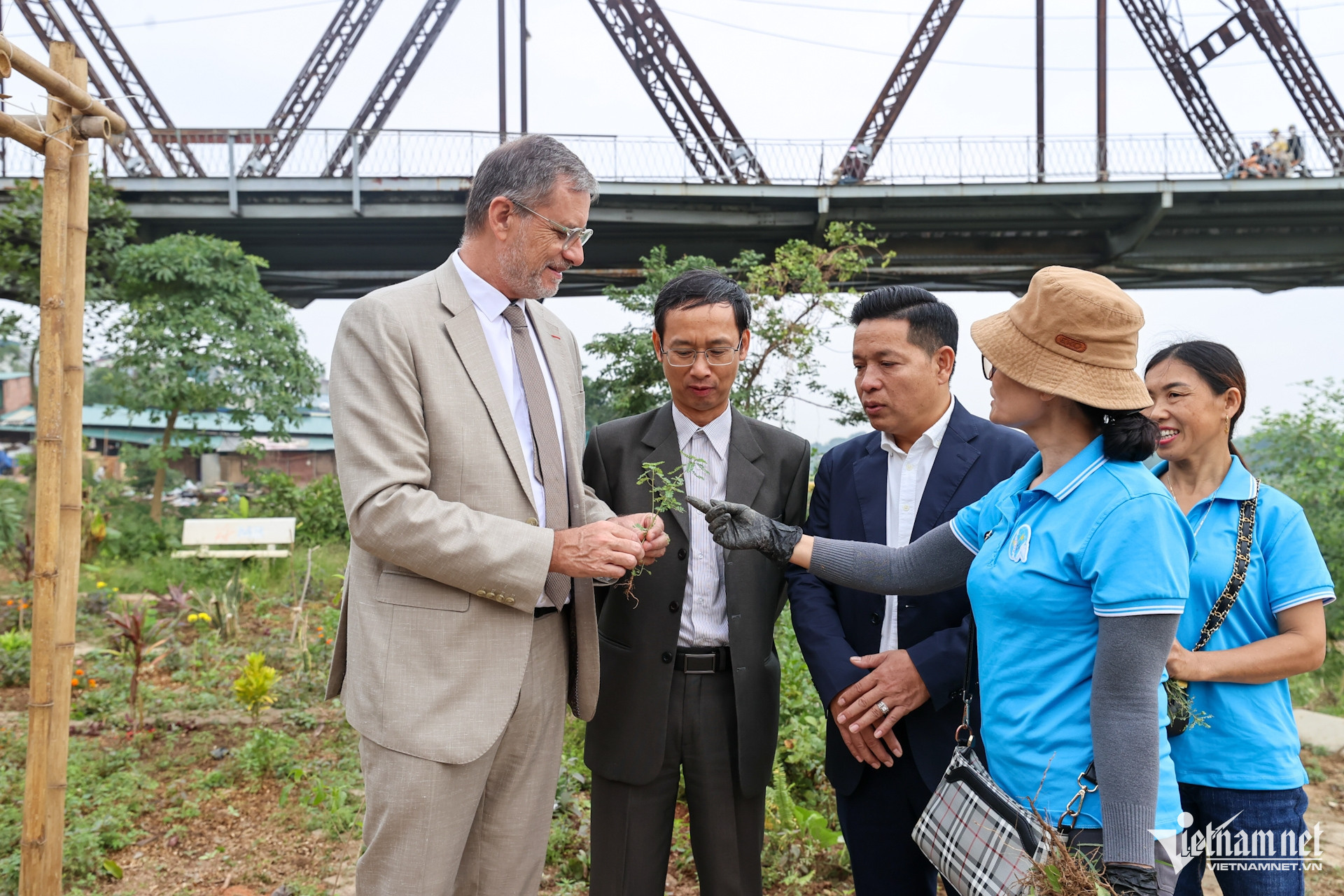
The next stop on the Ambassador’s itinerary was Hanoi University of Pharmacy, a century-old institution that has preserved its classic French architectural style. The university traces its roots to the Faculty of Pharmacy under the Indochina Medical College, with Dr. Alexandre Yersin - former Director of the Pasteur Institute in Nha Trang - as its first principal.
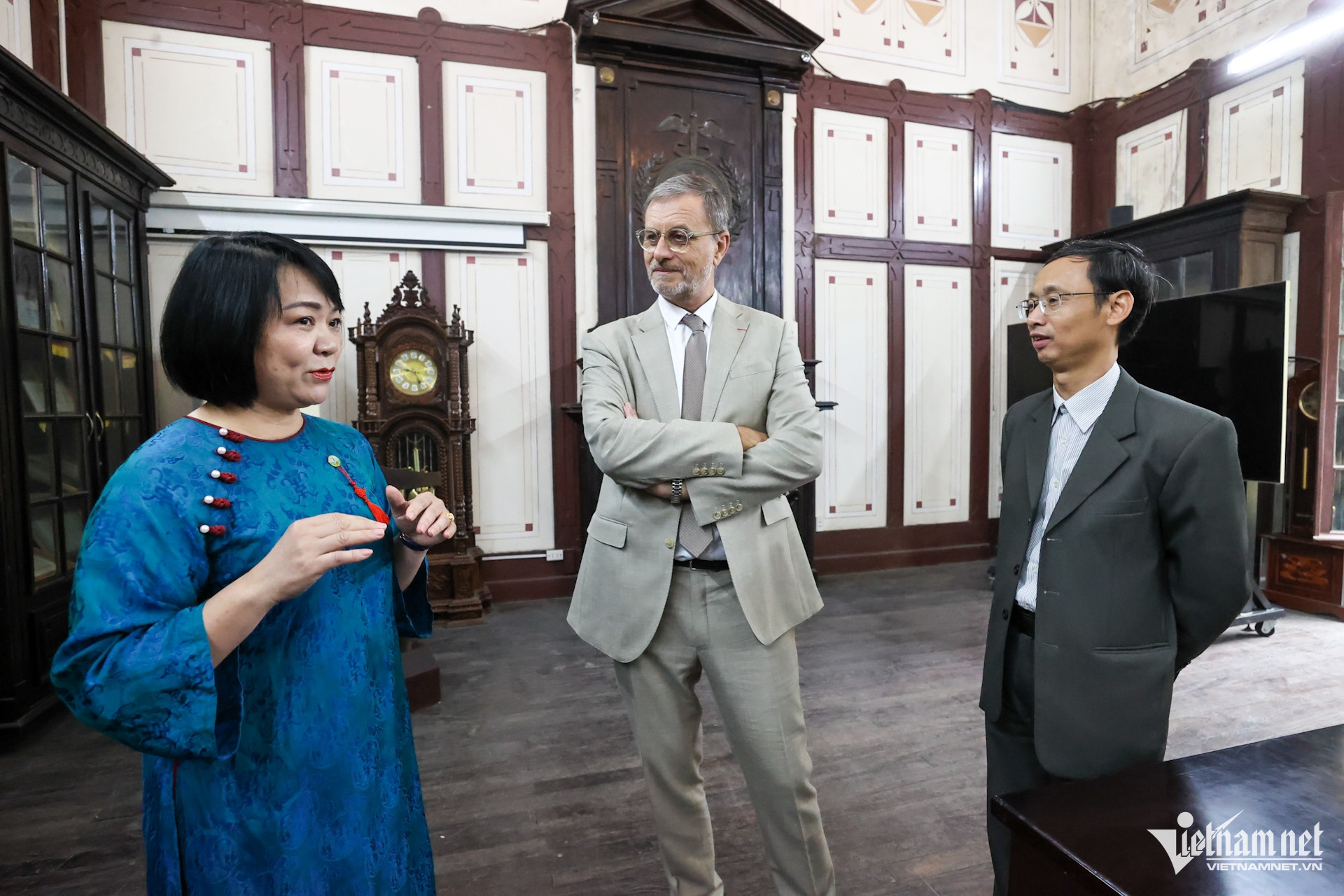
Welcomed by Vice Rector Dinh Thi Thanh Hai, the Ambassador toured the council room, library, classrooms, and campus grounds.
“Shortly after assuming my role as Ambassador to Vietnam, I stumbled upon this architectural gem during a Sunday walk. Despite being a weekend, I saw students playing sports on campus. The building has been well-preserved, from its furniture to its architecture, and I was deeply moved,” he said.
 |
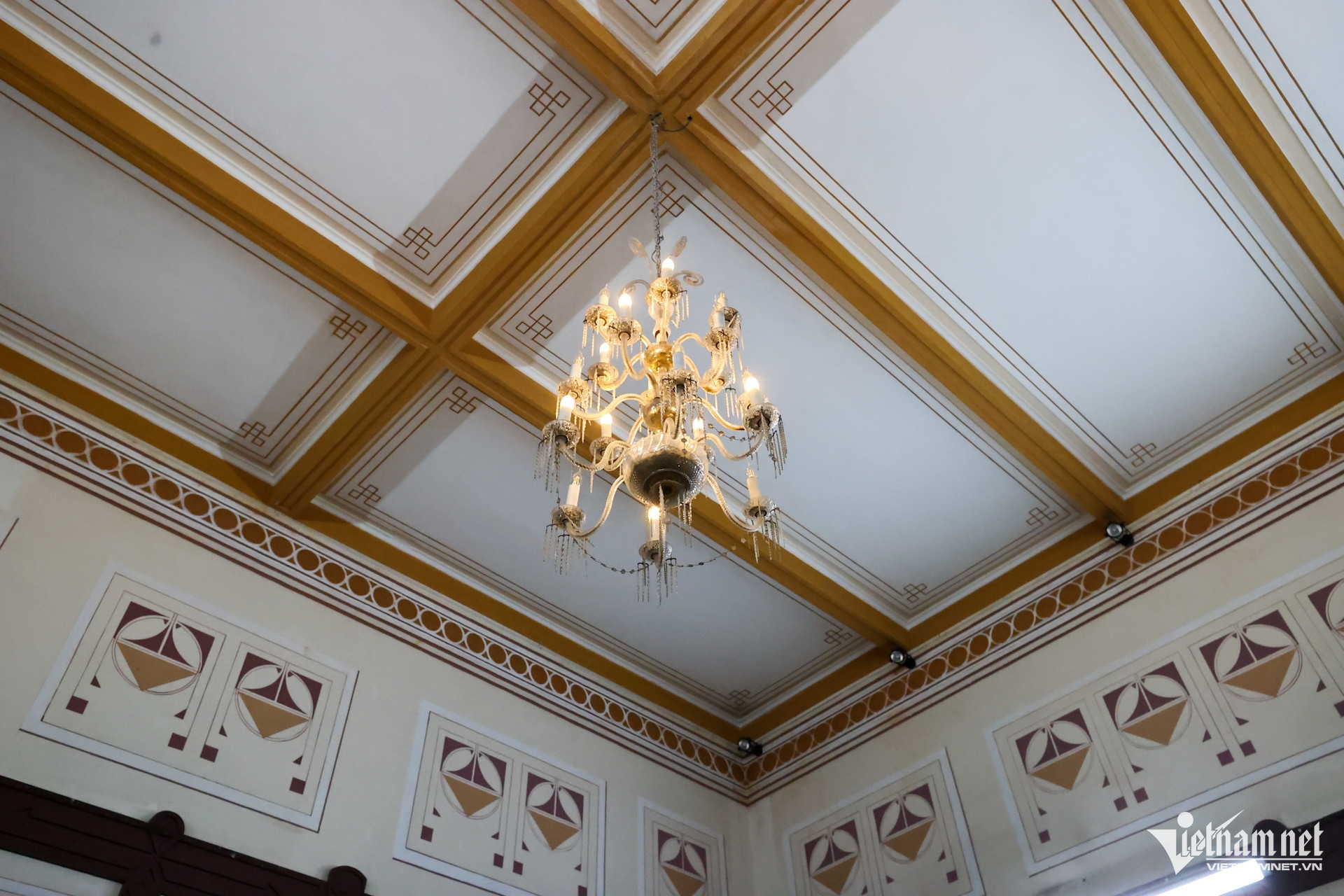 |
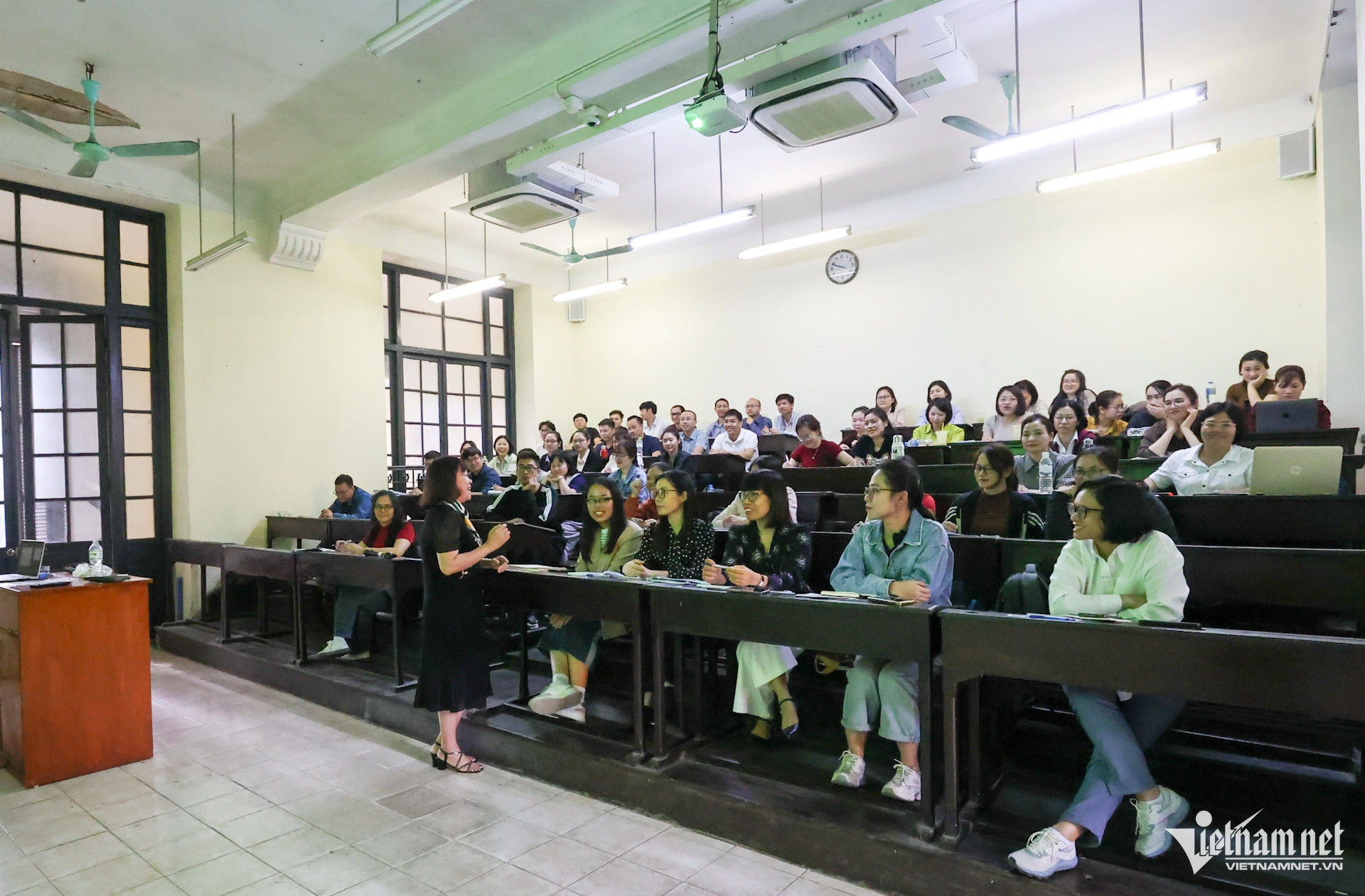 |
 |
The university's signature yellow walls, green window frames, and soaring arches exemplify classic French architecture. The Ambassador expressed hope that such landmarks could be opened to the public, much like presidential palaces in France.
Collaboration in pharmacy and medicine remains a proud highlight of Vietnam-France relations. Since the 1990s, approximately 3,000 Vietnamese doctors and pharmacists have been trained in France, with dozens continuing to receive training annually.
“This partnership benefits both nations and, most importantly, serves the Vietnamese people,” Ambassador Brochet noted.
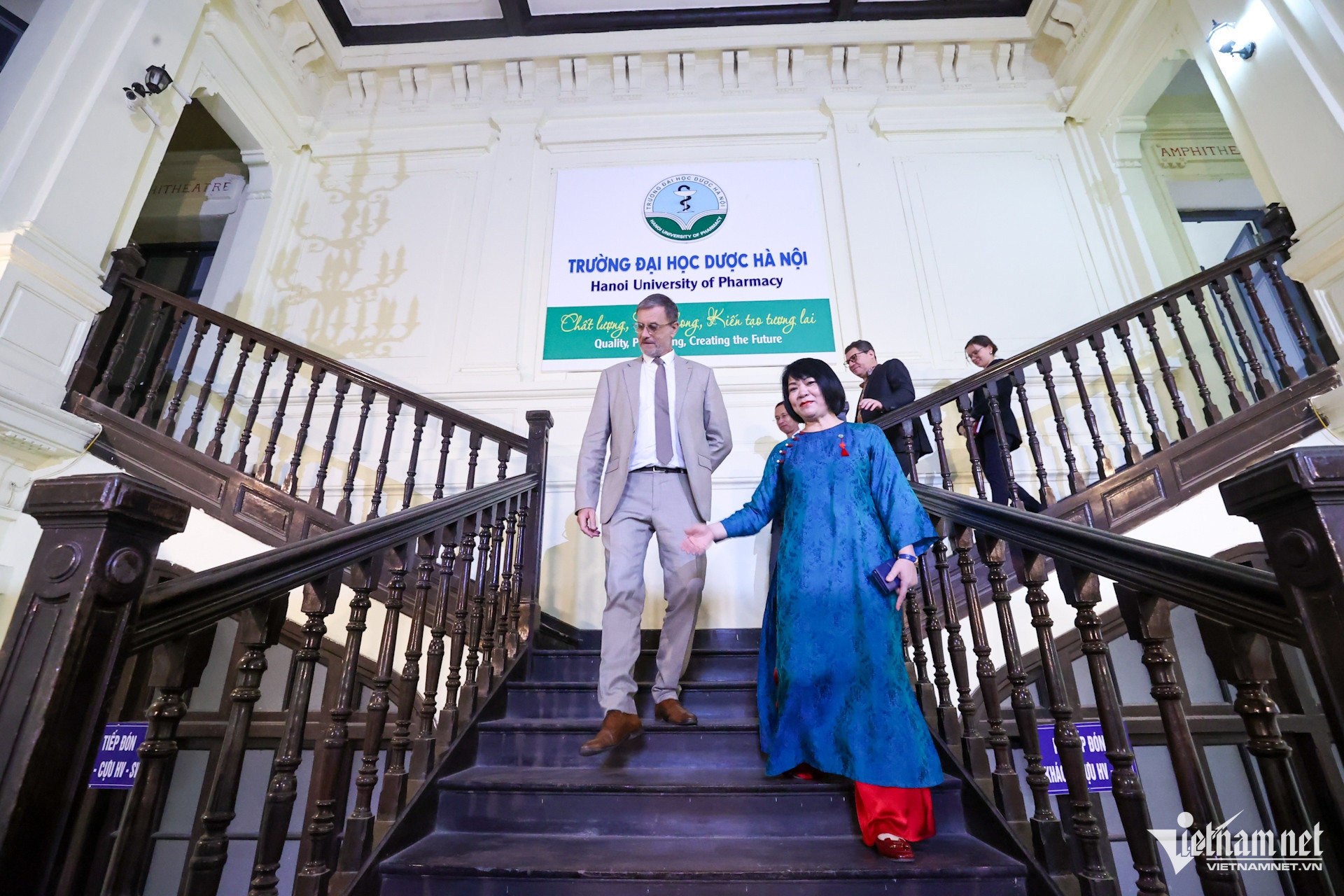
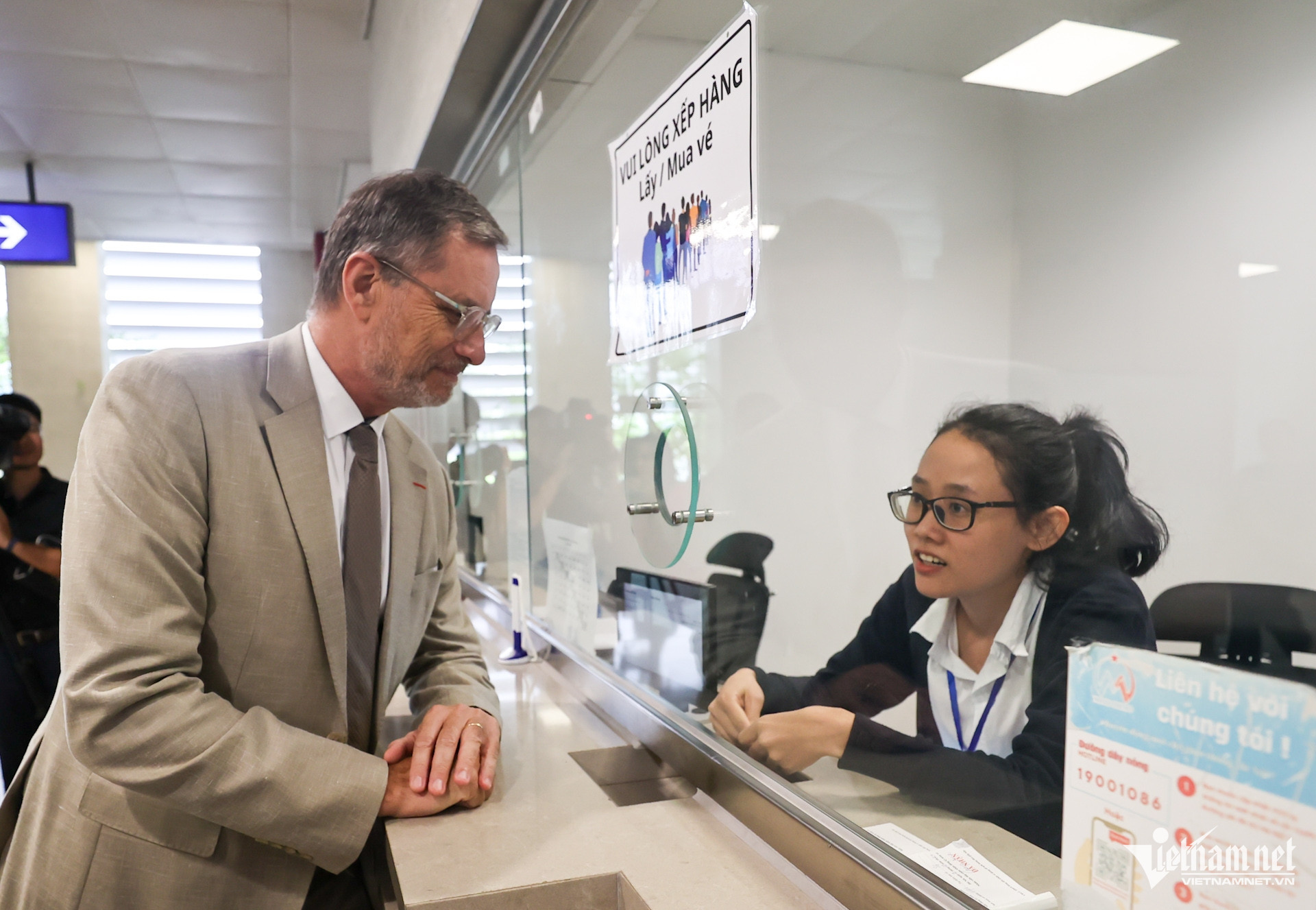
Concluding his day, the Ambassador experienced Hanoi’s elevated metro system, boarding at Cau Giay Station. He purchased his ticket and admired the public art installation titled “Five o’clock in the Morning, Hanoi Awakens” at the station, a gift from the French Development Agency (AFD).
Ambassador Brochet recalled attending the station’s official inauguration weeks earlier. “This metro project is a vital addition to Hanoi, making urban rail an integral part of future cities. It also supports Vietnam’s commitments to sustainable development,” he said.
 |
 |
 |
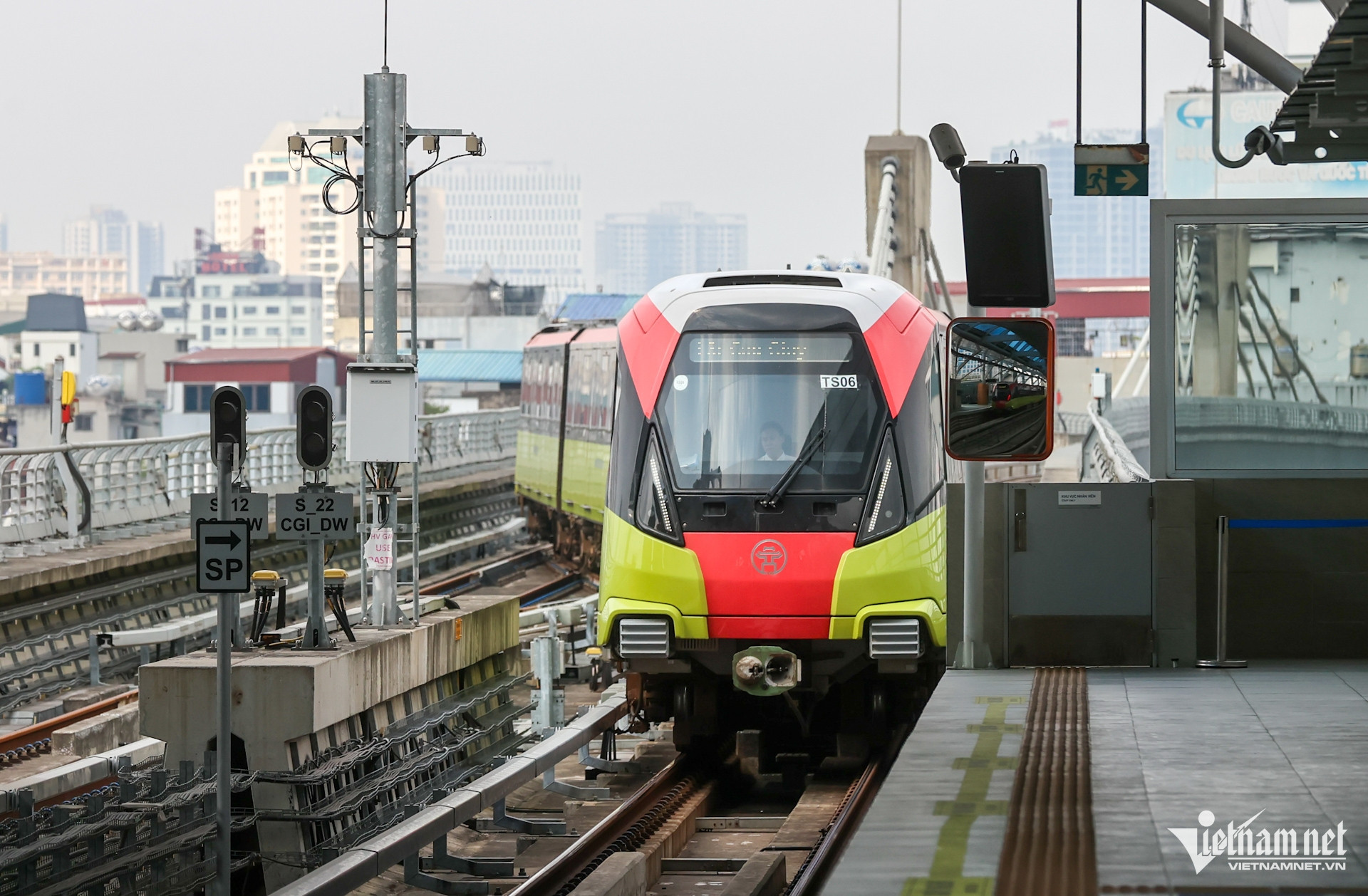 |
France contributed €500 million (13.6 trillion VND) to the project, and French enterprises supplied advanced technology. “With the completion of this project, Hanoi joins the ranks of global capitals with metro systems - a significant milestone,” he remarked.
France is eager to continue partnering with Vietnam on future urban rail projects in Hanoi and Ho Chi Minh City. Ambassador Brochet expressed optimism that the underground section of the Nhon–Hanoi metro line would soon be completed and operational.
Looking ahead, he affirmed France’s interest in participating in Vietnam’s ambitious high-speed North-South railway project.
The Ambassador’s journey highlighted the deep ties between Vietnam and France in cultural preservation, education, transportation, and sustainable development. These collaborations, he said, exemplify the enduring friendship and shared vision of the two nations.
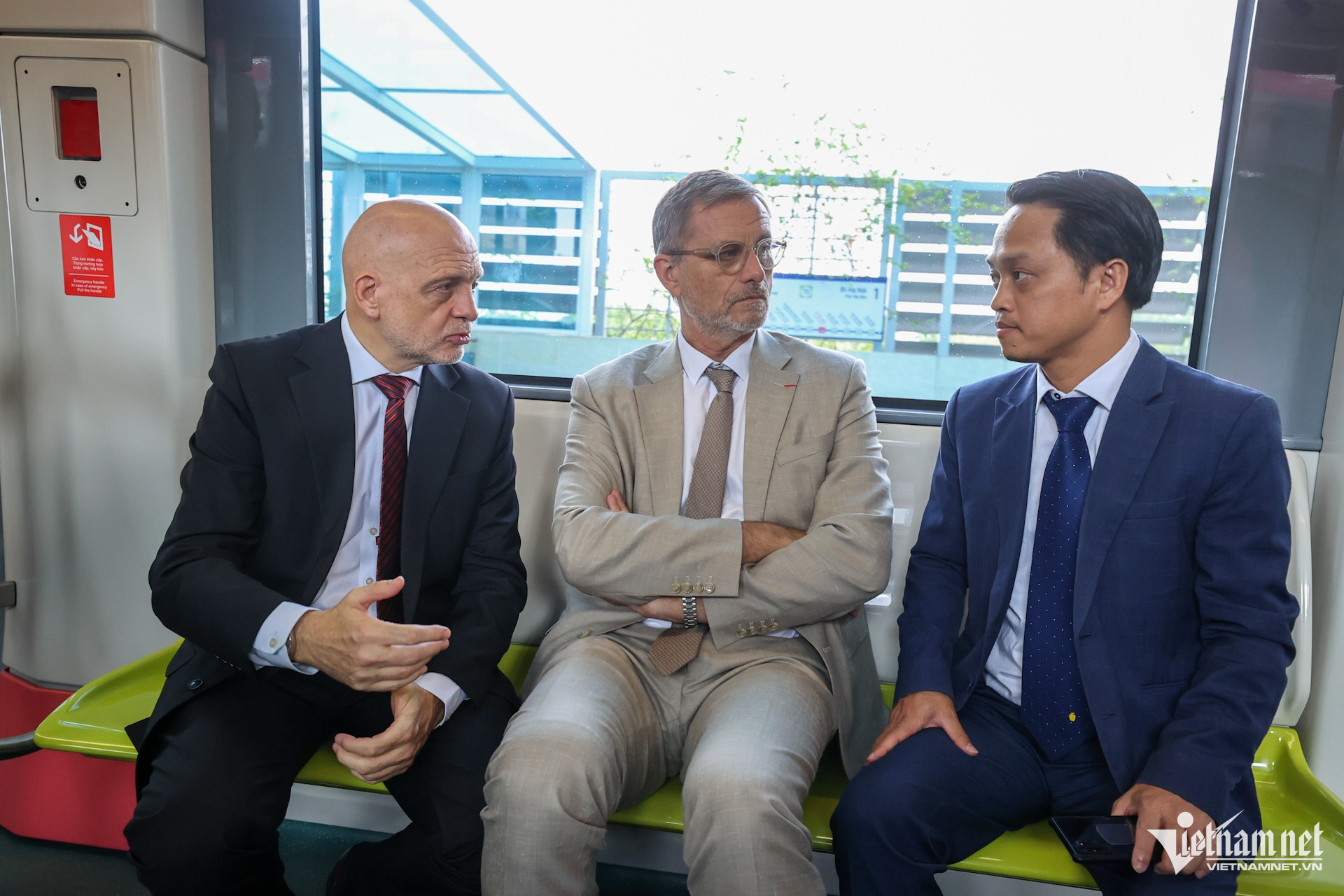
Photos: Pham Hai